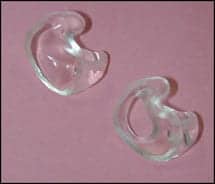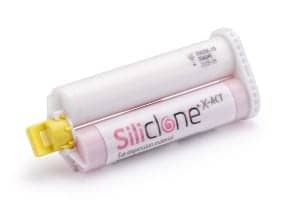
|
| Larry Brethower, ScD, BCHIS, is a hearing instrument specialist who has been licensed in Missouri for 25 years, with 10 years of consulting/dispensing in Oregon. |
The cell phone industry finally has embraced HAC
During the 1970s and 1980s, custom in-the-ear (ITE) hearing aids became very popular. Many hearing care professionals—and their clients—soon realized that a telephone handset held closely to one of these custom aids would generate a “whistling” or feedback condition. This created a need for an induction coil to be installed inside the aid—the advent of the telecoil, or t-coil option.
Various compatible accessories were developed for use with the telecoil option. In the 1990s, cell phone use gained tremendous popularity. The hearing aid telecoils did not work well (some not at all) with cell phones. In fact, it was found that, when cell phones were used with hearing aids equipped with or without telecoils, a loud buzzing/whistling would occur (ie, poor compatibility between cell phones and hearing aids).
In the late 1990s, many hearing aids were introduced with a digital technology platform; however, cell phone/hearing aid compatibility did not improve. Since 1995, the hearing aid industry has been collaborating with the cell phone industry to develop standards that would allow hearing aids to perform well with cell phones. The results of this collaborative effort developed a standard set of immunity and emissions requirements, including testing protocols,1 that both devices must adhere to.
During this development process, the hearing industry was able to improve the immunity standard (shielding) of their digital hearing instruments, far surpassing previous performance levels. Having achieved this level by 2002, the hearing aid industry was surprised to learn of no emissions improvement by the cell phone industry.
In July 2003, the FCC reopened hearings to address the cell phone industry’s lack of improvement. The FCC defined more specifically the standards to be met by 2006 for the cell phone industry. Since then, the industry has quickly achieved and surpassed the standards. It currently offers more than 90 models of phones with an acceptable M-3 emissions rating.
Assessing the Phones: T- and M-Ratings
The cell phone and hearing industries have developed a scale by which the consumer may accurately judge the compatibility/performance of their products. The immunity rating for hearing aids is on a scale of 1 to 4, with 4 expected to be the best performance level. The emissions rating for cell phones is also on a scale of 1 to 4; again, with 4 resulting in the best cell phone/hearing aid compatibility. The compatibility is further segregated into a performance analysis using a hearing aid telephone coil option (t-rating), and a performance level using the hearing aid microphone only (m-rating).
When the consumer is attempting to discern the best performance between a hearing aid and cell phone, the numbers from the m-ratings of both the cell phone and hearing aid should be added together (summed). Of course, if telephone coil compatibility/performance is to be assessed, the t-ratings of each device should be summed. T-ratings should not be summed with m-ratings; the two ratings should always be kept separate.
A hearing ability scale has also been developed for the consumer. This scale ranges from 1 to 6—with 6 expected to have excellent telephone communication performance, and 5 to be considered a “normal” expectation level for the consumer.
The collaborative efforts between the cell phone and hearing aid industries have resulted in many aids and cell phones achieving a summated score of 5—a “normal” level of cell phone communication performance. A good hearing aid user goal would be a hearing aid with an M-3 immunity rating, added to a cell phone with an M-3 emissions rating, summating to a total of 6—an excellent hearing aid/cell phone communication ability result!
Since 2006, the major hearing aid manufacturers have most of their current product lines at a minimum M-2/T-2 immunity rating. Some hearing aid manufacturers have certain hearing aid models available at M-3/T-4 immunity ratings. This, of course, provides better compatibility results with a broader variety of cell phones (eg, those that may have only an M-2/T-2 rating). As mentioned earlier, more than 90 cell phone models currently have M-3 ratings.
Hearing aid wearers should always ask cell phone carriers what the emissions ratings are for any new phone being considered for purchase, and cell phone providers should have this information available. Additionally, nothing takes the place of an actual field test of the cell phone.
Reference
- Seabury D, Hill BJ. Hearing aid compatibility (HAC) and wireless devices. Hearing Review. 2007;14(4):98-106.
Correspondence can be addressed to Larry Brethower, BC-HIS, at .




